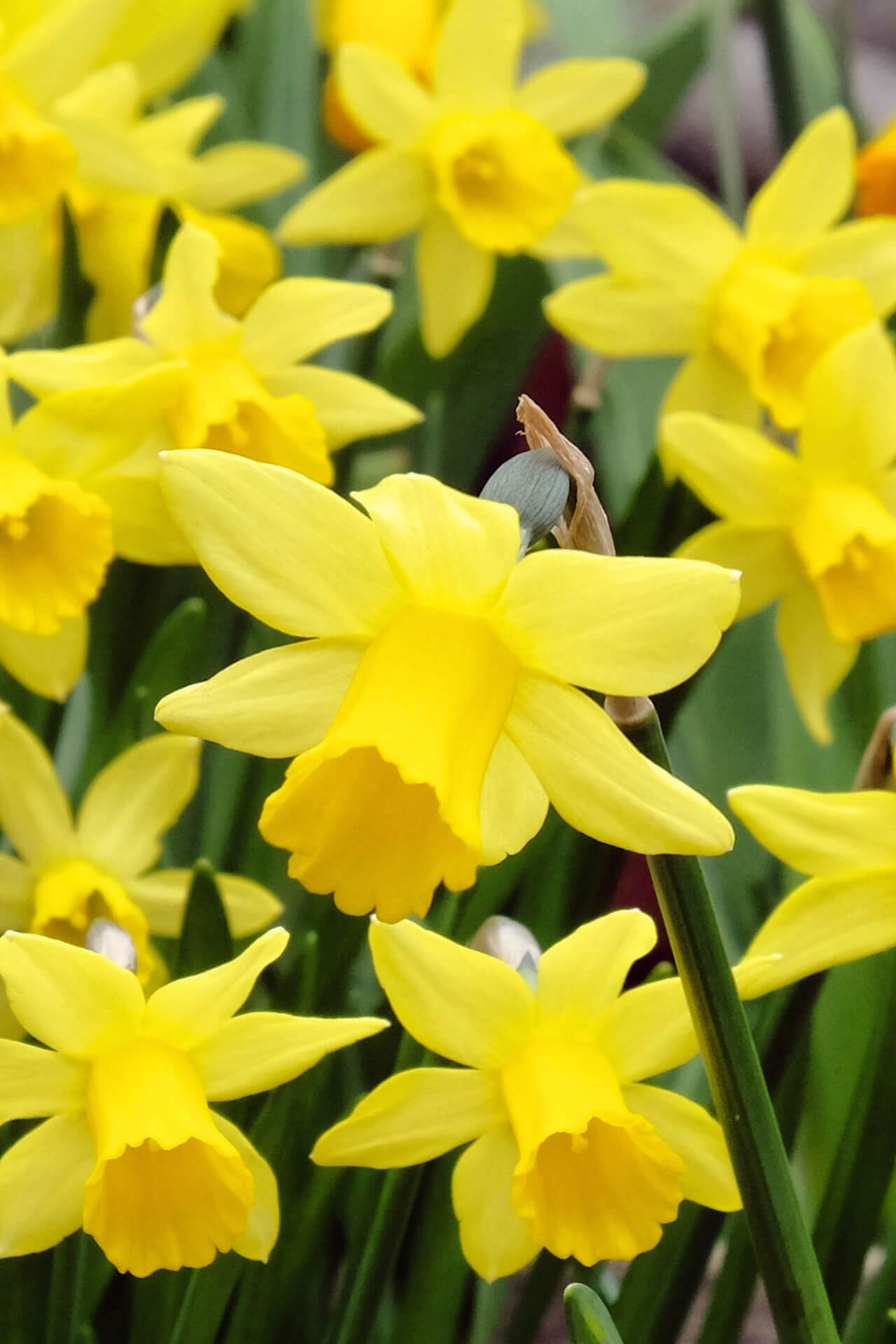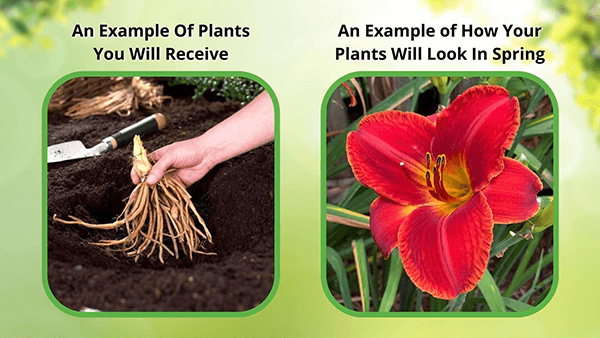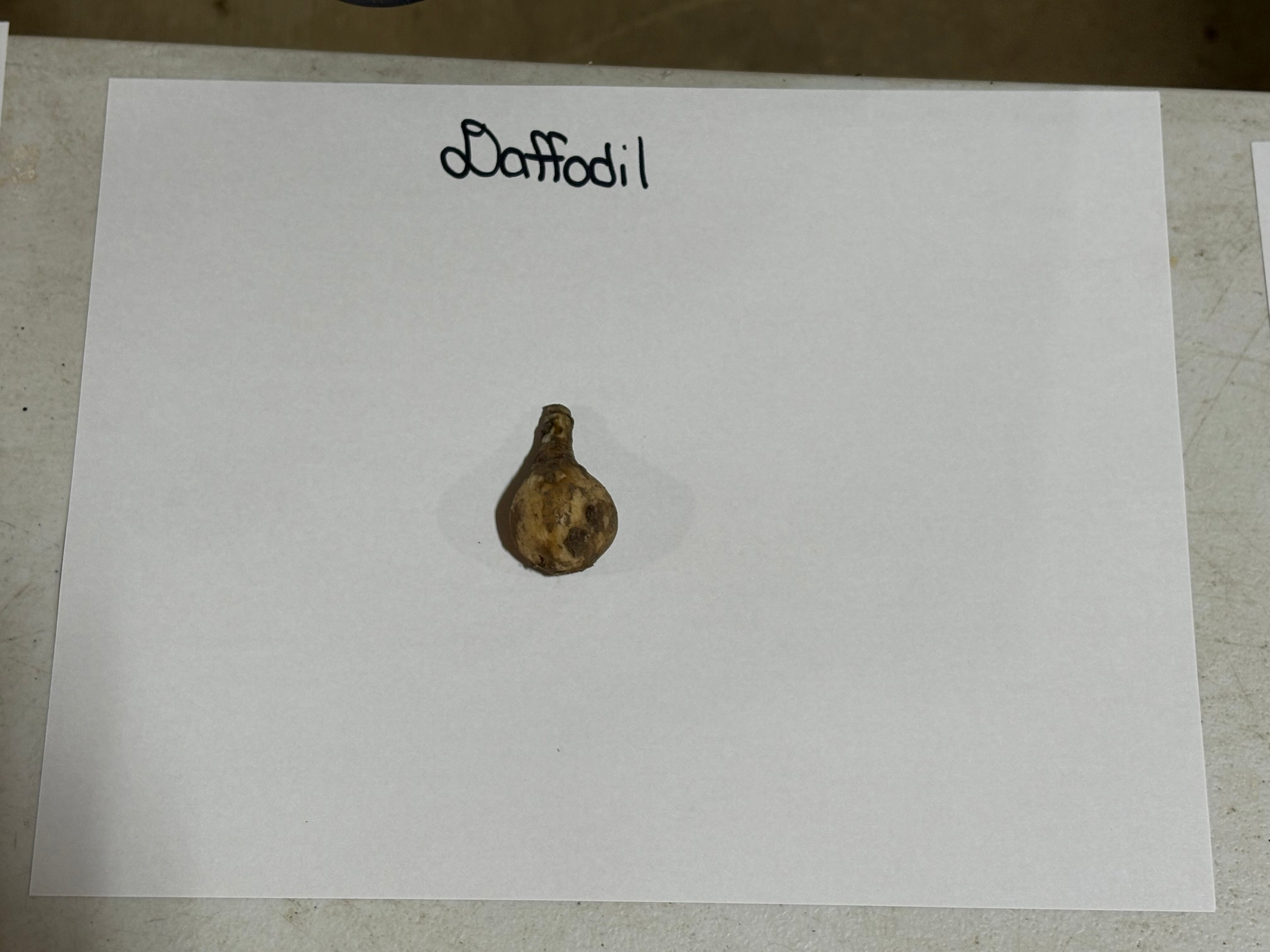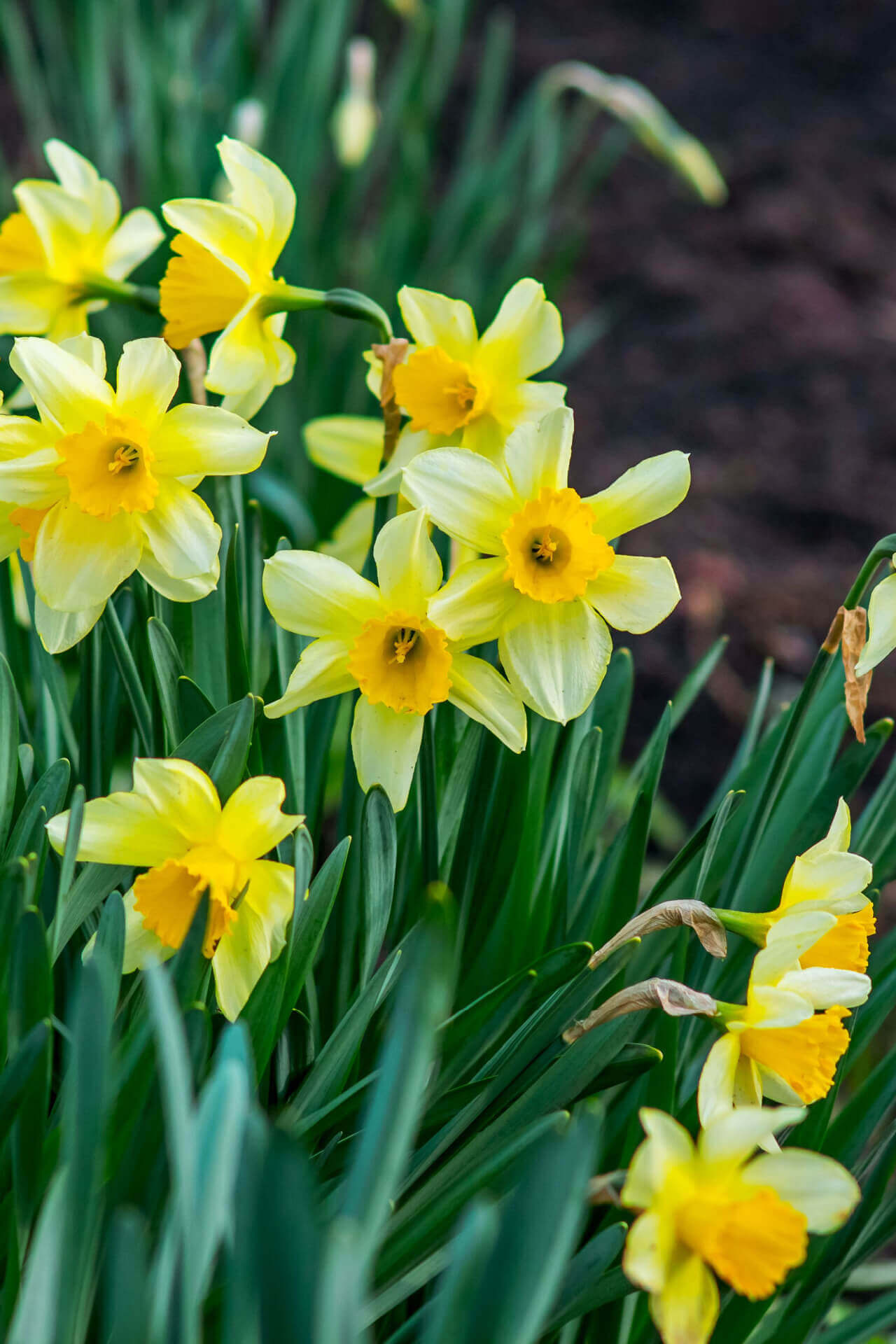Daffodil Plants For Sale - Narcissus
Daffodils are gorgeous and one of Spring's first blooming perennials. They offer predominantly yellow flowers whose showy blossoms begin to appear in March and continue through April as a beautiful reminder that spring has arrived. As common as they are in the United States, primarily through the Midwest, they are native to Europe, China, Japan, Afghanistan, and northern Africa. It is thought that European colonizers brought them to America, where they quickly became naturalized.
Plant Details - Daffodil Plants (Trumpet Daffodil)
Family: Amaryllidaceae
Light Requirement: Full Sun, Partial Shade
Water Needs: Moderate
Height: 8-30 in
Spread: 6-12 in
Growth Rate: Rapid
Soil Preference: Nutrient-rich, Clay, Sandy, Loam
Bloom Time: Spring
Flower Color: Yellow, White
Wildlife Value: Attracts butterflies
Notable Characteristics - Daffodil Plants
Daffodils come from the genus Narcissus, which is named for a Greek myth in which the young god Narcissus fell so in love with his own reflection that he died, and the gods turned him into this flower. A single leafless, hollow stem grows from the plant’s bulb, along with several narrow, strap-like leaves.
The flower has six stamens, which emerge from a tubular center with scalloped edges. The six petals form around the center and are usually yellow, but can also be white. The trumpet-like center is usually yellow, but can also be orange, providing a range of color combinations for these sunny perennials.
Landscape and Maintenance of Daffodil Plants
The showy, yellow flowers are very common throughout the United States and can thrive in many climatic environments. They grow best in partial shade or full sun and feel at home deep in many types of soil, including clay, loam, or sandy soil. The large blossoms and six pollen-bearing stamens are a major pollinator attractant, luring in butterflies and bees. Order Your Daffodil Plants Today.
Daffodils are long-lived, easy to establish, and make beautiful cut flowers. Their sunny, yellow blooms will always be a perfect reminder that spring has come to your garden.
Exposure
Daffodils thrive best in full to partial sunlight. They prefer at least 6 hours of sunlight daily but can tolerate some shade, especially in warmer climates. Proper light exposure ensures vibrant blooms and healthy growth.
Height at Maturity
Under 12"
Usage
Shipped As
Bare-root
Ships
USPS
Planting Zones
3-8




